Abstract
Continuous and time-sample measures of the in-seat behavior of a secretary were obtained. Measurement error, i.e., the extent to which the sample measures deviated from the continuous measure, was a function of the frequency of the sample measurements and the criterion used to score an example of the behavior. If the behavior had to be exhibited throughout the observational interval (whole-interval time sampling), there was a consistent underestimate of the continuous measure. If the behavior had to be exhibited only briefly within the observational interval (partial-interval time sampling), there was a consistent overestimate of the continuous measure. And, if the behavior had to be exhibited at the end of the observational interval (momentary time sampling), overestimations and underestimations of the continuous measure occurred about equally often. As expected, the more frequently the sample measures were made the closer was the agreement between the sample and continuous measures. Two conclusions concerning measurement error in interval time sampling were made. The first was that the error will be a function of the mean time per response. The second is that this error will not be consistent across experimental conditions.
Keywords: time sampling, whole interval, partial interval, momentary, measurement error, continuous versus time-sample recording
Full text
PDF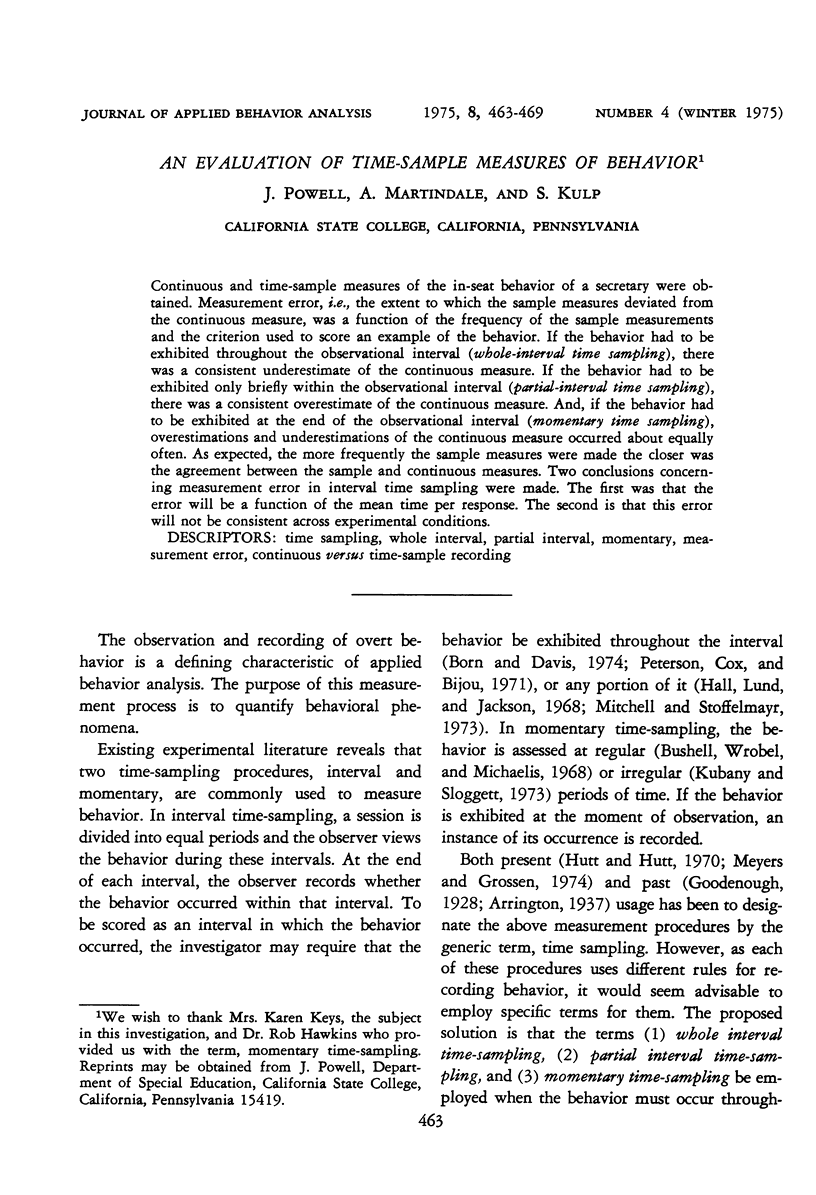
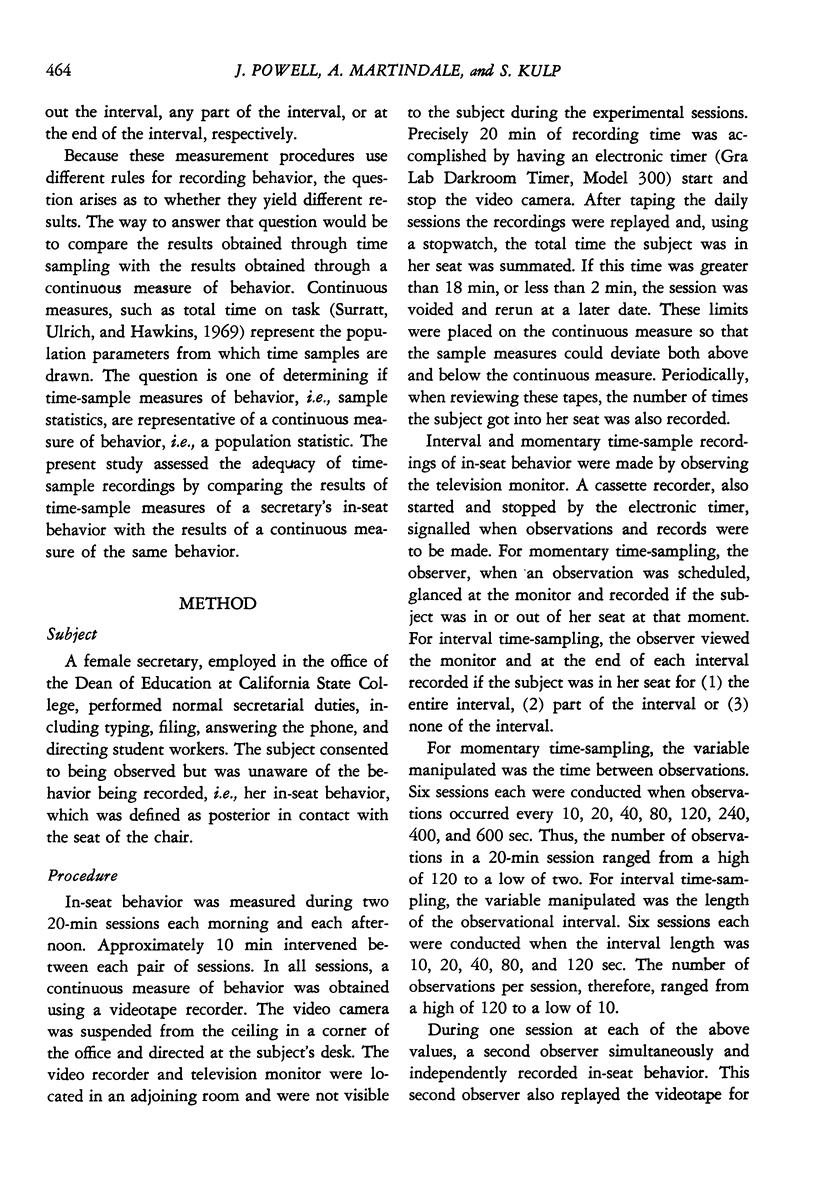
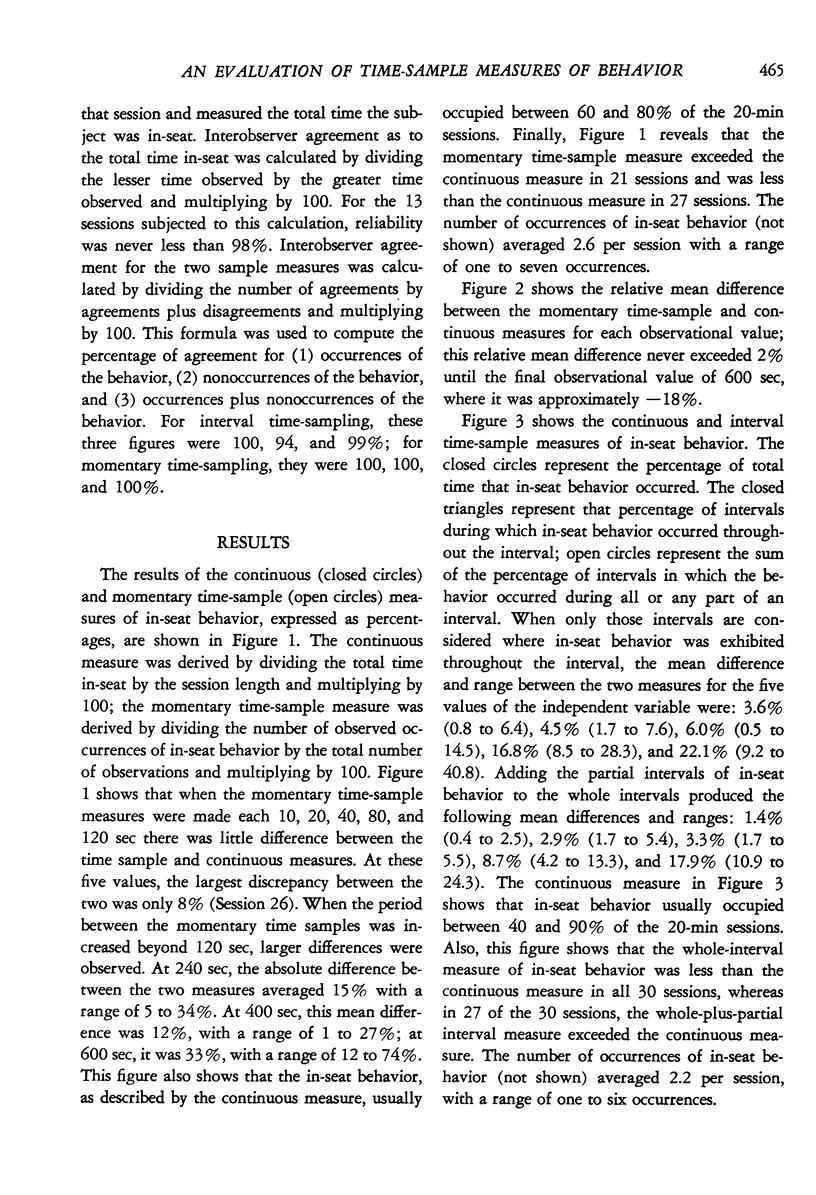
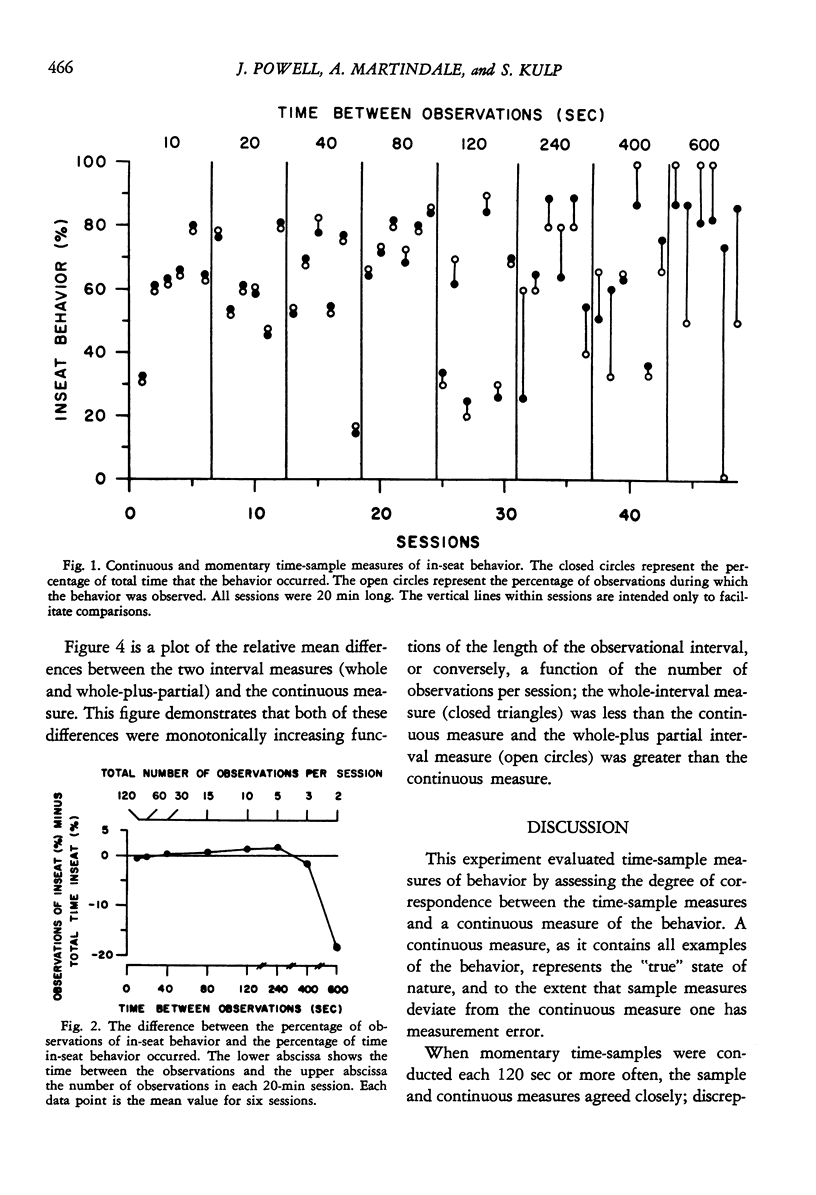

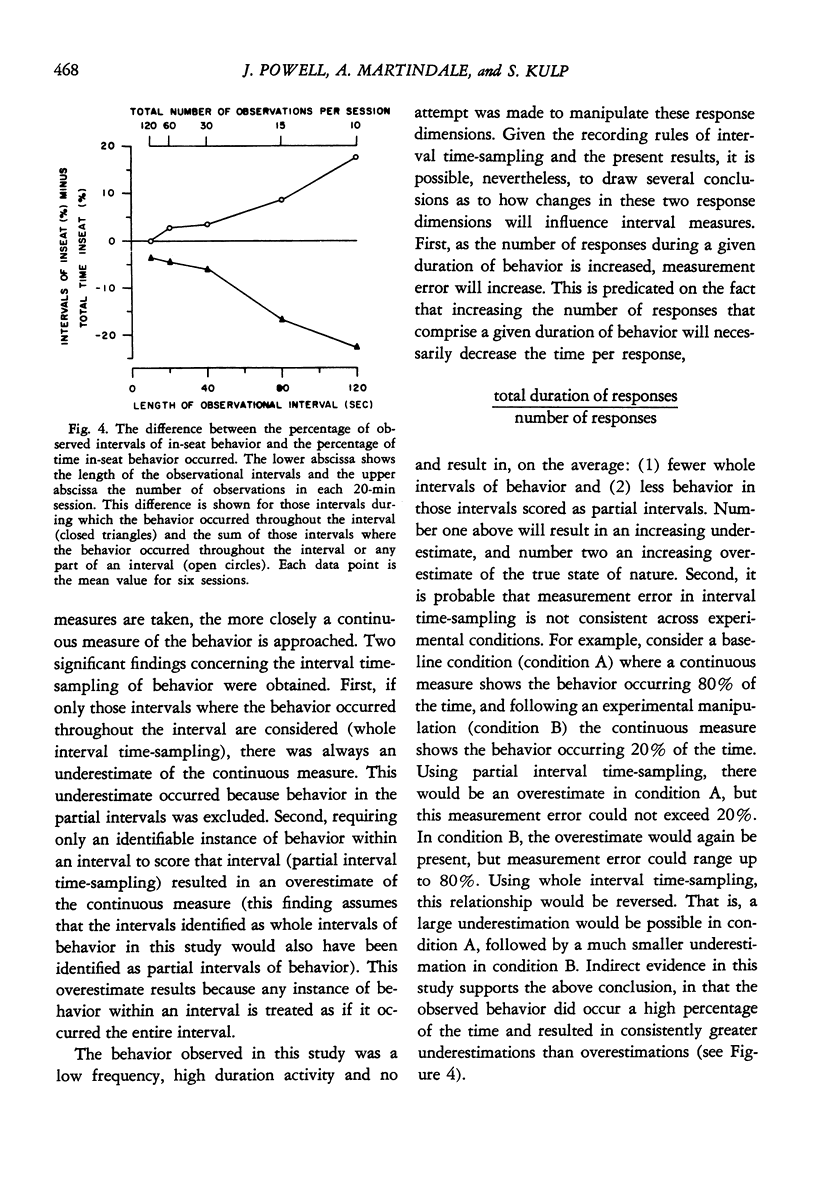
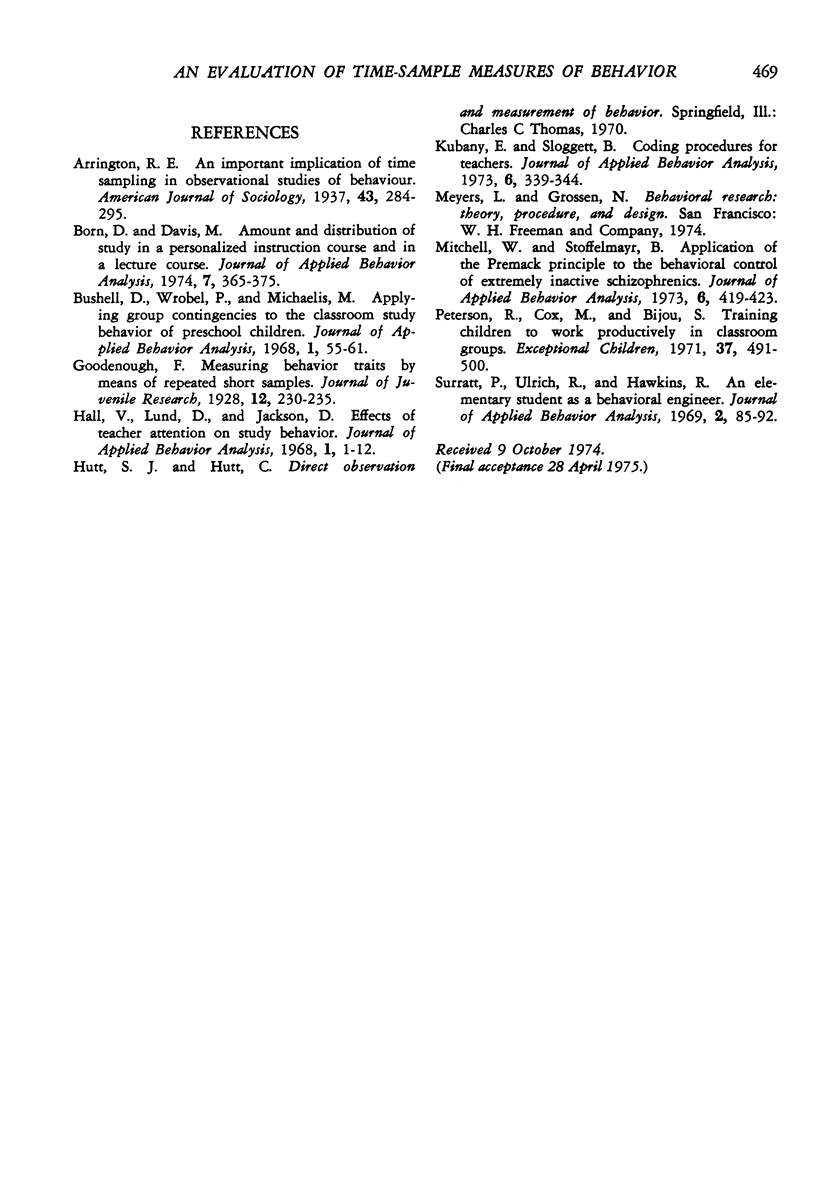
Selected References
These references are in PubMed. This may not be the complete list of references from this article.
- Born D. G., Davis M. L. Amount and distribution of study in a personalized instruction course and in a lecture course. J Appl Behav Anal. 1974 Fall;7(3):365–375. doi: 10.1901/jaba.1974.7-365. [DOI] [PMC free article] [PubMed] [Google Scholar]
- Bushell D., Wrobel P. A., Michaelis M. L. Applying "group" contingencies to the classroom study behavior of preschool children. J Appl Behav Anal. 1968 Spring;1(1):55–61. doi: 10.1901/jaba.1968.1-55. [DOI] [PMC free article] [PubMed] [Google Scholar]
- Hall R. V., Lund D., Jackson D. Effects of teacher attention on study behavior. J Appl Behav Anal. 1968 Spring;1(1):1–12. doi: 10.1901/jaba.1968.1-1. [DOI] [PMC free article] [PubMed] [Google Scholar]
- Kubany E. S., Sloggett B. B. A coding procedure for teachers. J Appl Behav Anal. 1973 Summer;6(2):339–344. doi: 10.1901/jaba.1973.6-339. [DOI] [PMC free article] [PubMed] [Google Scholar]
- Mitchell W. S., Stoffelmayr B. E. Application of the Premack principle to the behavioral control of extremely inactive schizrophrenics. J Appl Behav Anal. 1973 Fall;6(3):419–423. doi: 10.1901/jaba.1973.6-419. [DOI] [PMC free article] [PubMed] [Google Scholar]
- Peterson R. F., Cox M. A., Bijou S. W. Training children to work productively in classroom groups. Except Child. 1971 Mar;37(7):491–500. doi: 10.1177/001440297103700702. [DOI] [PubMed] [Google Scholar]
- Surratt P. R., Ulrich R. E., Hawkins R. P. An elementary student as a behavioral engineer. J Appl Behav Anal. 1969 Summer;2(2):85–92. doi: 10.1901/jaba.1969.2-85. [DOI] [PMC free article] [PubMed] [Google Scholar]


